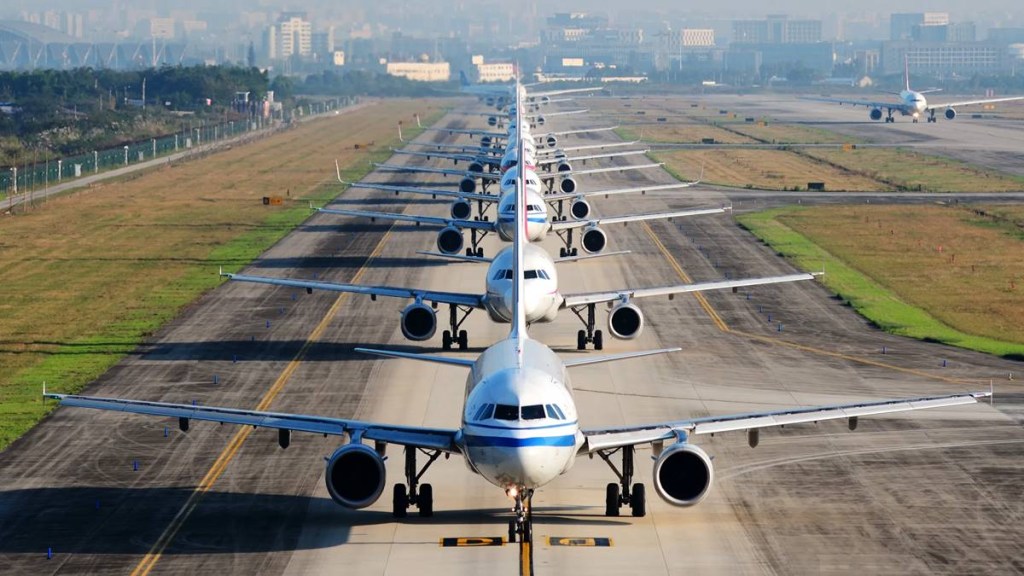According to a research report by JM Financial, if high airfares persist for multiple years, it is likely to attract other corporate houses with deeper pockets to enter the sector due to its low entry barrier. Akasa Air, which gained 5% market share within a year, has demonstrated this trend.
The sudden bankruptcy filing by Go First, holding a 6.4% market share and a fleet of 26 operational planes, in May of this year has significantly benefited existing players in two ways: a sharp increase in fares (18% quarter-on-quarter according to JM fare tracker) and record high passenger load factors (PLFs) of over 90%.
The sector has also seen improved profitability prospects due to muted aviation turbine fuel (ATF) prices, down by 13.7% quarter-on-quarter, coupled with a stable Indian Rupee exchange rate.
Suggestions that likely to boost airport infrastructure:
The report suggests that airport infrastructure is likely to develop at a faster pace, ensuring sufficient supply. The Central government aims to increase the total number of airports from 148 to 200-220 by FY25, with plans to enhance the capacity of metro airports from 221 million passengers per annum to over 456 million passengers per annum within the next decade.
The Draft Aircraft Bill 2023 includes a provision that may lead to a cap on airfares imposed by the Centre. Currently, the Ministry of Civil Aviation and DGCA do not regulate airline fares, but the new draft bill grants them the authority to make rules regarding tariff disapproval or revision for operators of air transport services.
According to V.K. Vijayakumar, Chief Investment Strategist at Geojit Financial Services, the long-term prospects for the aviation industry in India look promising. The explosive growth in air travel is expected to make India the third largest air passenger market in the world by 2024. Factors contributing to this growth include the rising number of middle-income households, healthy competition among low-cost carriers, infrastructure development at leading airports, and a supportive policy framework.
From 79 million passengers in 2010, the number of travelers to, from, or within India doubled to 158 million in 2017. This figure is projected to exceed 520 million by 2037. The nation’s airplane fleet is also expected to quadruple in size to approximately 2,500 aircraft by 2038.
Current status of airport infrastructure:
At present, there are 131 operational airports in India, including 29 international, 92 domestic, and 10 custom airports. To meet the growing demand for air travel, the capacity of airport infrastructure must be increased. The government aims to develop 100 airports by 2024 under the UDAN Scheme and plans to invest $1.83 billion in airport infrastructure development by 2026. So far, 74 airports have been developed, and over 2.15 lakh UDAN flights have operated, benefiting over 1.1 crore passengers.
As per the Ministry of Civil Aviation, India is the third-largest domestic aviation market. The number of domestic passengers doubled from 60 million in 2014 to 143 million in 2020 before the impact of Covid-19. International passenger numbers increased by almost 50%, from 43 million to 64 million. The total aircraft count has risen from around 400 in 2014 to 723 in 2023, despite the impact of the pandemic.
The Centre has operationalised an additional 74 airports, helicopters, and water aerodromes since 2014. The aim is to increase the total number of operational airports to 220. Based on traffic data from different domestic airlines, the passenger count reached 636.07 lakh during January-May 2023, reflecting a significant annual growth rate of 36.10% compared to the same period in the previous year (January-May 2022). The passenger count in May 2023 increased by 15.24% compared to April, reaching 132.41 lakh passengers.
The aviation sector in India is experiencing substantial growth, driven by factors such as increasing air travel demand, infrastructure development, and supportive policies. The future outlook appears optimistic, with several key players and stakeholders investing in fleet expansion, airport infrastructure, and orders for new aircraft.
Concern areas:
The report raises the question of whether this highly profitable period can be extrapolated for a year or two, primarily attributing it to the benefits associated with a duopoly market.
Even marginal players like SpiceJet with a 5.4% market share and Akasa Air with a 4.8% market share are expected to see significant balance sheet improvement during this exceptionally profitable period, enabling them to withstand sector cyclicality in the future.
The TATA group currently holds a 26.3% domestic market share and aims to increase it further with a new order for a gigantic fleet, as mentioned in the report.
Moreover, IndiGo has placed an order for 500 Airbus A320 family single aisle aircraft in addition to their existing order book of 480 aircraft, which is expected to be completed by 2030. This will ensure a steady stream of aircraft deliveries for IndiGo between 2030 and 2035.
Akasa Air has also placed an additional order for four aircraft, following their previous order of 72 aircraft. The company plans to place another order for a three-digit number of aircraft before the end of the calendar year.
